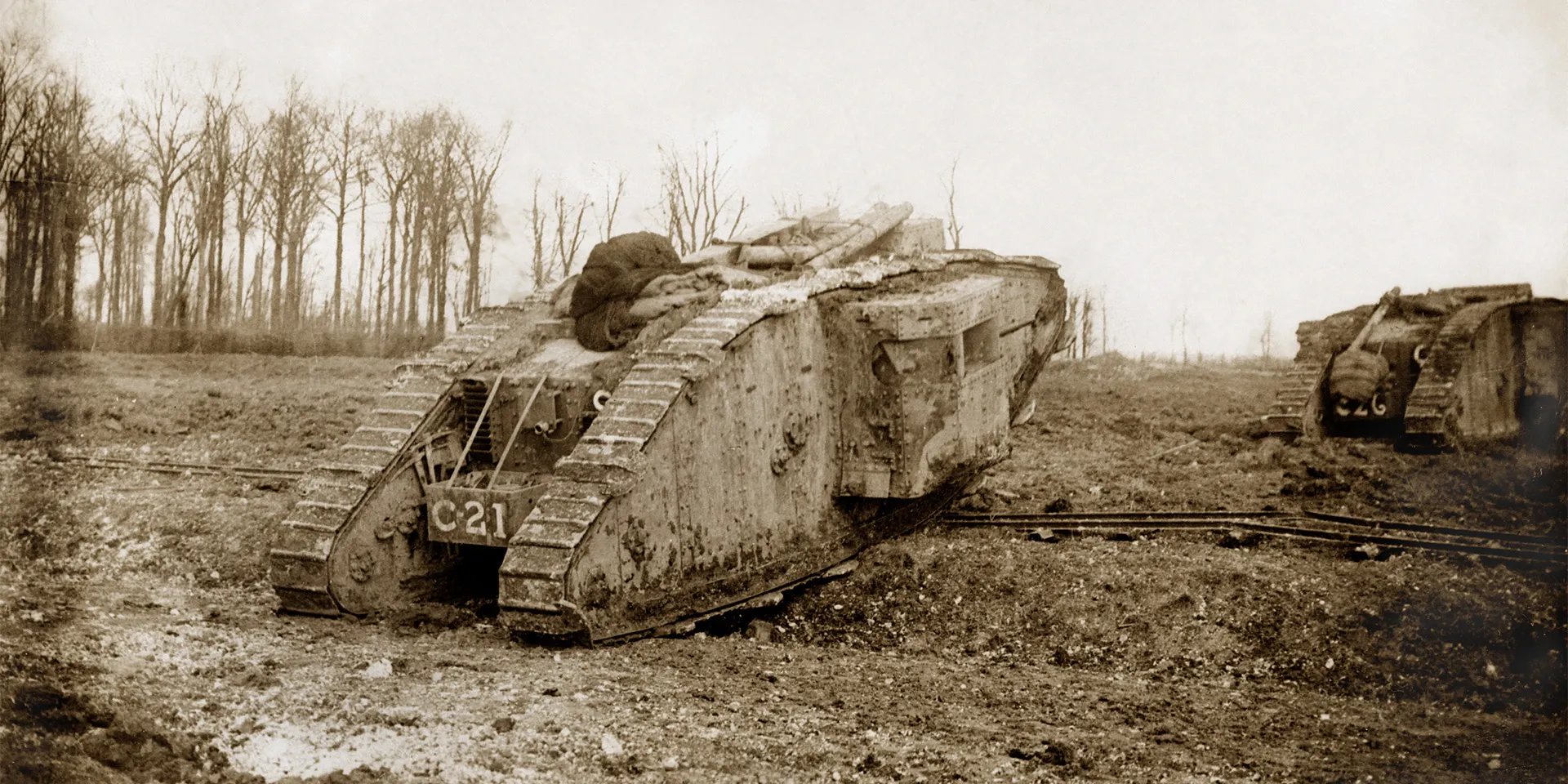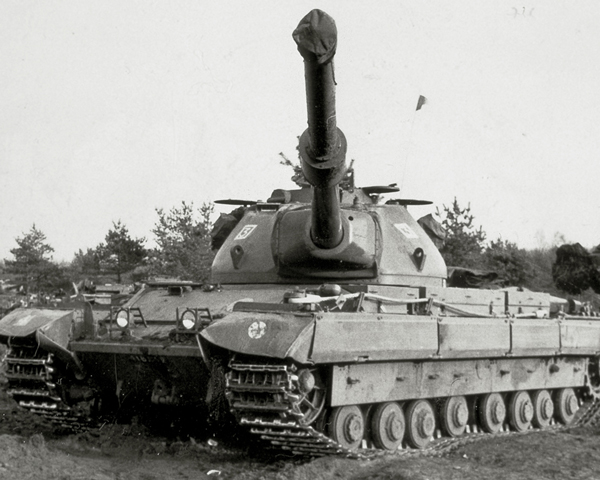Origins
This regiment was formed during the First World War (1914-18). Its origins lie in the tank companies of the Heavy Branch of the Machine Gun Corps.
Tanks were first used at Flers-Courcelette in September 1916 during the Battle of the Somme. By November 1916, the Heavy Branch's companies had risen in number to eight. Each was then expanded into a battalion and given a letter from A to H.
On 28 July 1917, these eight battalions were officially split off from the Machine Gun Corps to form the Tank Corps, with their letters switching to numbers.
The new unit’s first commander was Brigadier-General Hugh Elles, who had already commanded the Heavy Branch for a year. By the end of the conflict, four officers in or attached to the Tank Corps had been awarded the Victoria Cross.
Inter-war period
By January 1918, the Tank Corps had 15 battalions. This number had risen to 26 by the end of that year. However, Britain’s post-war commitments required far fewer tanks. From 1919, the regiment was reduced to a depot battalion and four active battalions.
The regiment was deployed to Russia, Ireland, Germany, Iraq, Persia (now Iran), Palestine and India during this period. In 1923, it was granted a ‘Royal’ prefix in recognition of its service during the First World War.
Second World War
By 1939, with the prospect of war looming large over Europe, three more regular battalions had been re-formed, giving a total of eight. These were supplemented by a large number of territorial battalions.
In April that year, the Royal Tank Corps was renamed the Royal Tank Regiment and placed under the umbrella of the newly formed Royal Armoured Corps, alongside the Army’s other mechanised cavalry units.
The Royal Tank Regiment served on all fronts, and in most major engagements, of the Second World War (1939-45).
Post-war deployments
At the end of the Second World War, the Royal Tank Regiment was once more reduced to eight regular battalions, which were now referred to as regiments instead. Since then, it has undergone another series of reforms, with the number of regiments falling to five in 1959, four in 1969, and then two in 1994.
The Royal Tank Regiment has seen action in Malaya, Korea, Cyprus, Borneo, Aden, the Gulf, the Balkans, Iraq and Afghanistan. It also spent much time stationed in Germany with the British Army of the Rhine, as well as garrisoning the Suez Canal Zone, Libya, Hong Kong and Northern Ireland.
Legacy
In 2014, 1st Royal Tank Regiment and 2nd Royal Tank Regiment merged. In recent years, the single-battalion Royal Tank Regiment has deployed on exercises and operations across the globe as the British Army’s leading experts in mounted close combat.
Focusing on the delivery of shock action, its arsenal includes the Challenger 2 battle tank, the Scimitar reconnaissance vehicle, and the Spartan armoured personnel carrier.
Regimental museums
The National Army Museum works with a network of Regimental and Corps Museums across the UK to help preserve and share the history and traditions of the Army and its soldiers.
Discover more about the Royal Tank Regiment by visiting The Tank Museum in Bovington.













